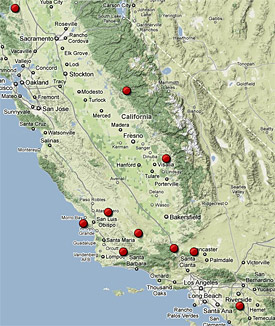Wonder
Antelope Valley Poppy Reserve, California
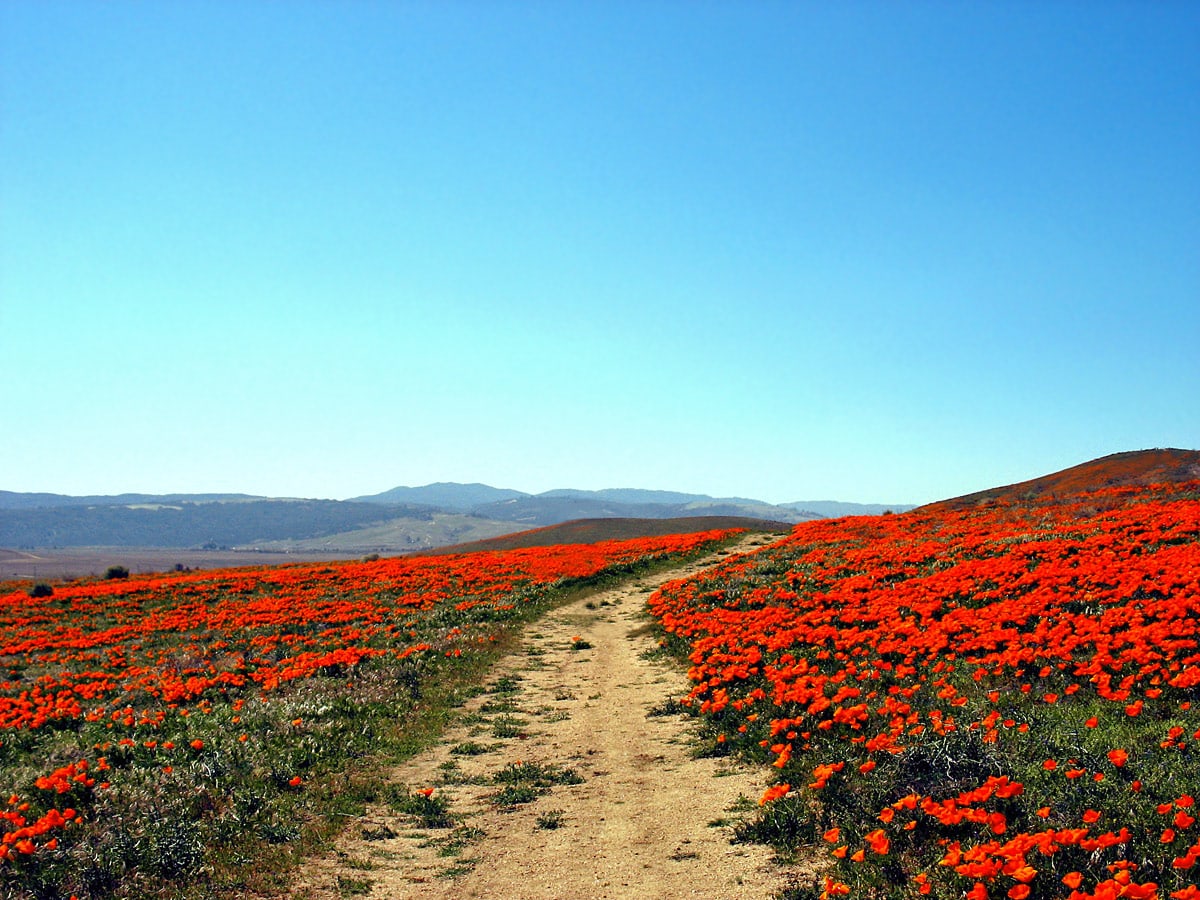
 In short
In short
In the western part of Antelope Valley there is an amazing monument of nature – a vast area covered with California poppies. In spring (late February – May) desert-like desolate hills become bright – they are colored by millions of these beautiful flowers.
 48.5%
48.5%
GPS coordinates
Location, address
Area
Dominating species
Map of the site
If you see this after your page is loaded completely, leafletJS files are missing.
 In detail
In detail
Nowadays this is protected area – Antelope Valley California Poppy Reserve.
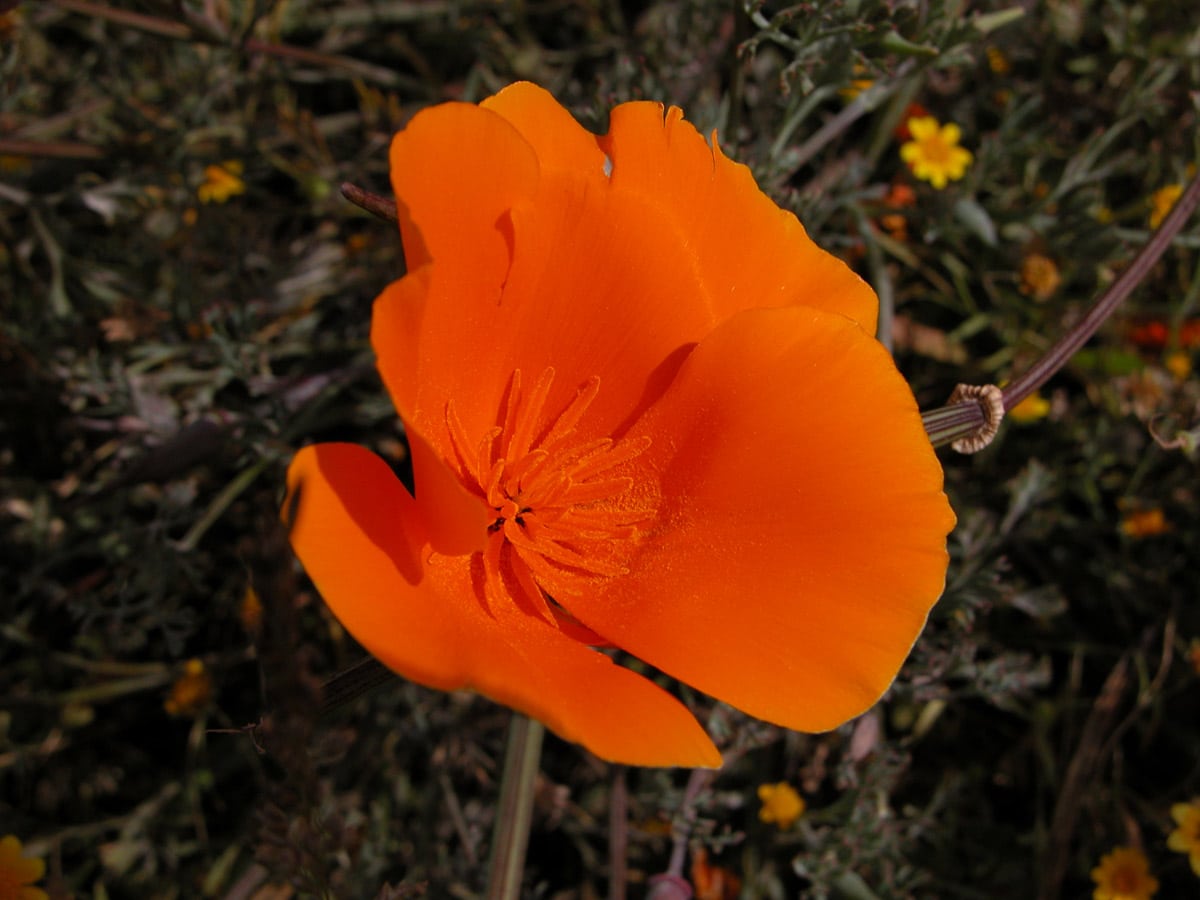
In earlier times Antelope Valley was not as desert-like as it is today. There is archaeological evidence of a rather dense population of diverse indigenous people, the valley was rich with pronghorn antelopes (giving a name to the whole valley) and other animals. There were more springs and small lakes and taller plants than today.
The last centuries though have been drier and gradually the western part of the valley turned into arid land similar to a desert. In fact, it is considered to be a high desert: the area is up to 900 meters (3000 feet) high.
Droughts have defeated some plants and animals but others have flourished in these harsh conditions. The term “flourish” is especially suitable for the California poppy. This joyous, bright orange and fragile flower prefers dry soil and hates to be disturbed by a shadow from taller plants or continuous disturbance by grazers.
Friends discover poppy
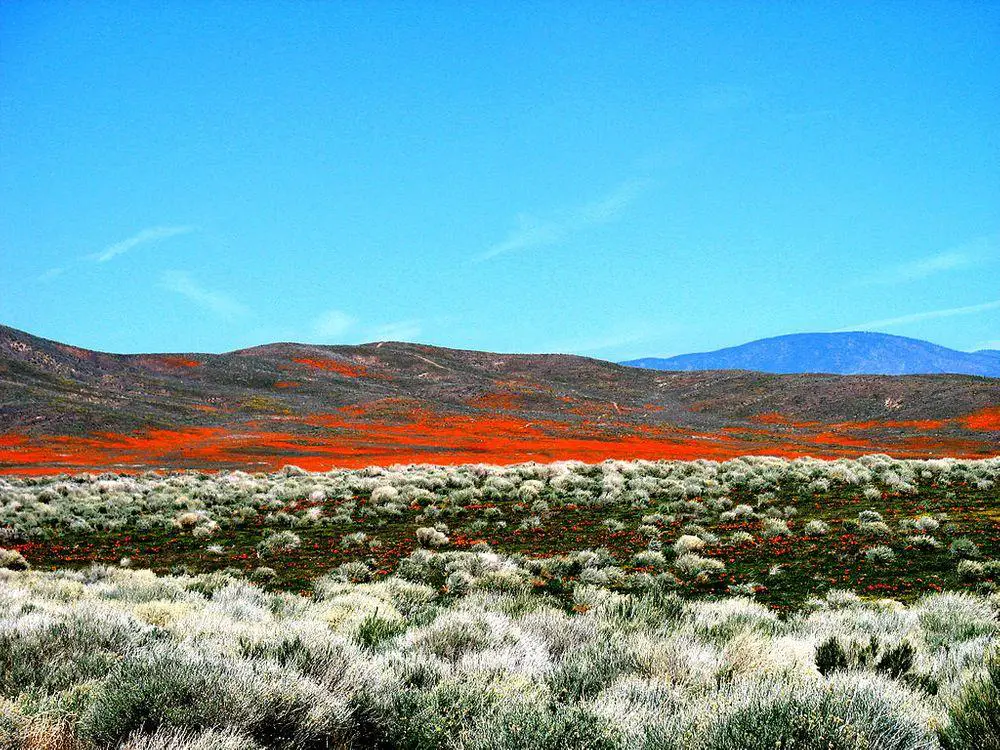
Although California was visited by white people for several centuries, the bright orange poppy was described by scientists only in the early 19th century.
In the early 19th century Russian Empire organized several rather successful voyages around the world to extend the political and economic contacts of the empire. During such voyages groups of scientists traditionally were taken aboard. Brig “Rurik” made its trip in 1815 – 1818 and the botanist of the team was German Adelbert von Chamisso but entomologist – Baltic German from present-day Estonia Friedrich von Eschscholtz. Both became close friends during the expedition and when Chamisso described the beautiful orange Californian flower, he named the plant after his friend – Eschscholzia californica Cham. Letter “t” somehow is lost from the family of Eschscholtz in the Latin name of the plant.
Painter protects poppy field
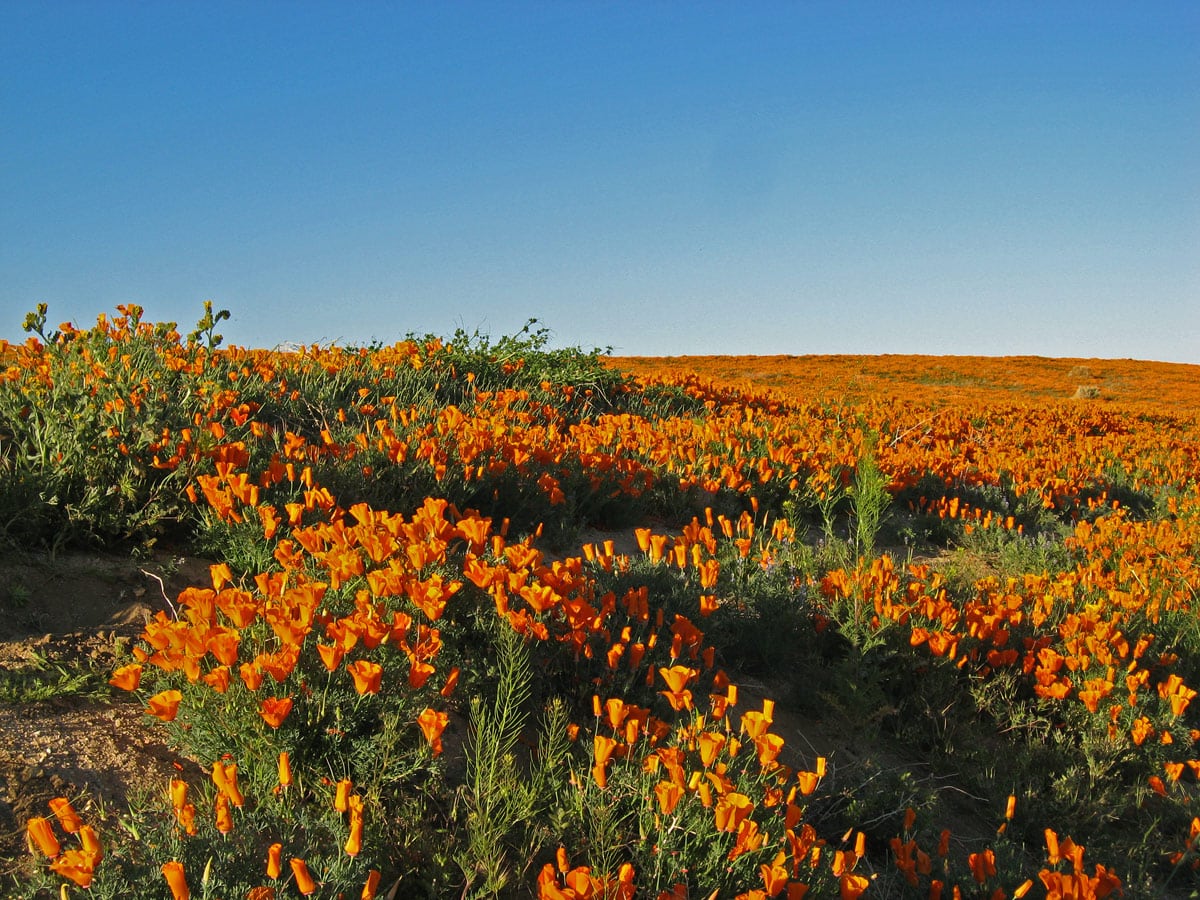
The beautiful flower became a state flower of California in the late 19th century (some sources state – in 1903) and nowadays it is prohibited to pick, destroy or uproot this plant in its natural habitats.
Unfortunately, this prohibition is not very efficient if housing is developed in former meadows – over the last decades’ fields of poppies sometimes are replaced by houses with lawns.
The only protected poppy meadow in California is Antelope Valley California Poppy Reserve. This area is closely connected with the personality of Jane Seymour Pinheiro (1907 – 1978). She moved over here, to Quartz Hill, in 1942 and became a well-known painter of poppies drawing them in watercolor with botanical precision. “Poppy lady” was behind the creation of the reserve and the interpretive center (Jane S. Pinheiro Interpretive Centre) of the reserve is named after her. She organized the purchase of poppy meadows in the 1960s together with other active women of the Lancaster area – this land forms a contemporary reserve.
How to experience poppies
Flowering time of California poppies in Antelope Valley may differ each year – but for the most part, it lasts from late February to mid-May.
Unfortunately there are years when poppies are scarce – such as a few years after 2005. Follow the information about the expected bloom time at the Website of California State Parks.
Reserve will provide services and access for cars only during the flowering season. In the remaining part of the year, the reserve is accessible to the public in the daytime, but one should leave the car further away.
Bear in mind that poppies are sensitive to weather conditions: in harsh, windy weather they close and may not open if the weather is cloudy. Often there is a chilly wind in afternoons – better come earlier.
Come on weekdays – then you will have better chances to be alone with the unique nature of California.
Beware of rattlesnakes, especially in late spring – stay on pathways. Don’t take pets with you, and, of course, don’t pick flowers.
References
- California State Parks. Antelope Valley California Poppy Reserve SNR., accessed in the 21st February 2010
- Horticulture Information Page.
- Ask.Art. Jane Seymour Pinheiro, accessed in the 21st February 2010
Antelope Valley Poppy Reserve is included in the following list:
 Linked articles
Linked articles

Top 10 locations of California poppy meadows and fields
California poppy meadows belong to the most impressive wildflower displays in the world. Their unusually clear and brilliant color seems to come from another, better reality. This flower has created a passion that is rare elsewhere in the world. Many Californians are obsessed with “wildflower hunting” – search of beautiful meadows, photographing, and just pure enjoyment of beauty.
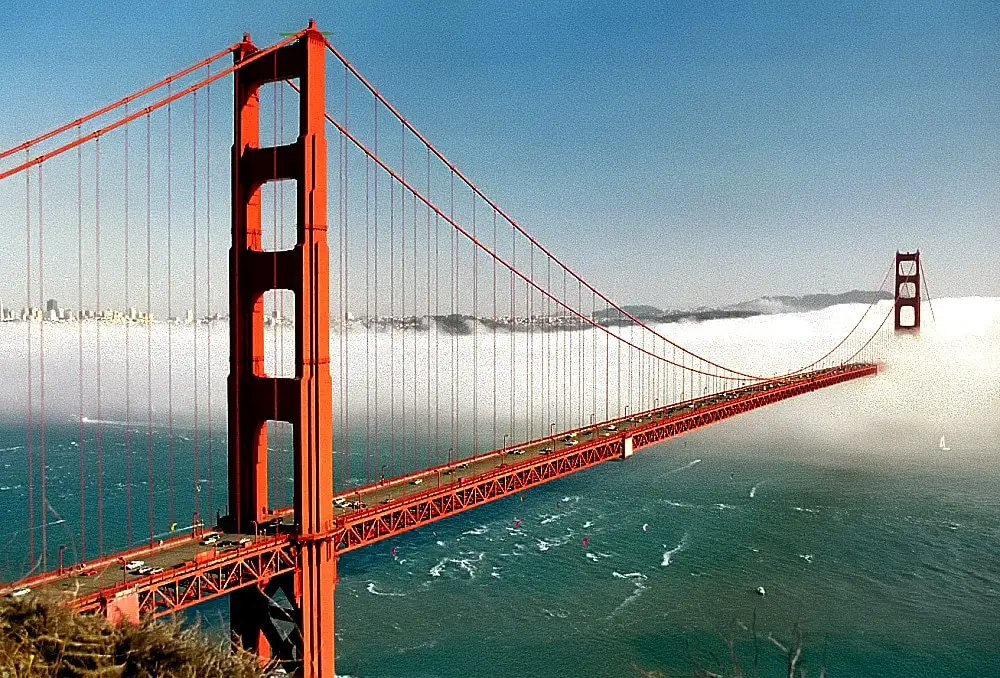
Wonders of California
Although California is one of the states in the United States of America, Americans often compare it to a separate country, e.g. “if California would be a country, it would have the eighth largest economy in the world”. We can go on with this comparison – California has more landmarks and attractions than many large countries of the world.
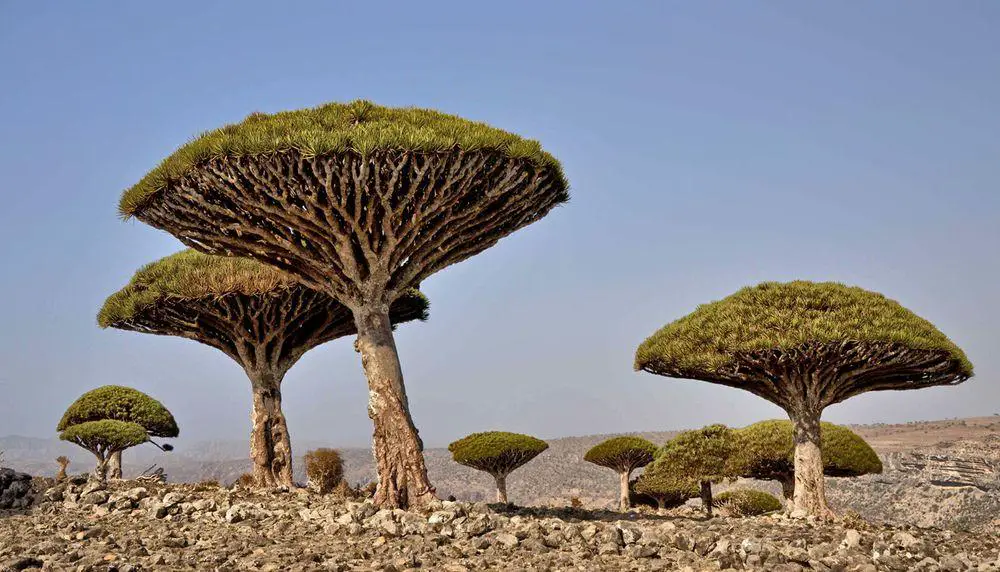
Ecosystems
Biotope is a rather small area with uniform environmental conditions and a specific community of life. Wondermondo describes biotopes and ecosystems which have striking looks, look very beautiful, or have other unusual characteristics.
 Recommended books
Recommended books
Guide to the Antelope Valley: San Andreas Ain’t No Fault of Mine
A fun and fact-filled guide to the Antelope Valley and High Desert area of Southern California. This book is an interesting practical guide to a myriad of unusual and interesting things to see and to do in the Antelope Valley. It provides a delightful mix of historical and contemporary information. Award-winning journalist Bonnie D. Stone provides directions and words of wisdom on how to get around and make the most of your travel and exploratory moments, as you see the incredible world-class attractions of the area from the largest concentration of petroglyphs to the World s rarest cats and the World s only drive-through earthquake fault.
Golden Poppies of California
California Indians thought fallen poppy petals were the source of the region’s mineral gold. John Muir saw California poppies as part of a “smooth, continuous bed of honey bloom.” For acclaimed nature photographer George D. Lepp, the flowers became an irresistible orange stream running through his life’s work. Lepp first encountered fields of blooming Eschscholzia californica during a chance visit to the Antelope Valley area. Intending to spend an afternoon photographing the bright orange flowers, he found himself overwhelmed by the sight of “vast fields of color” and didn’t stop shooting poppies for 15 years.

